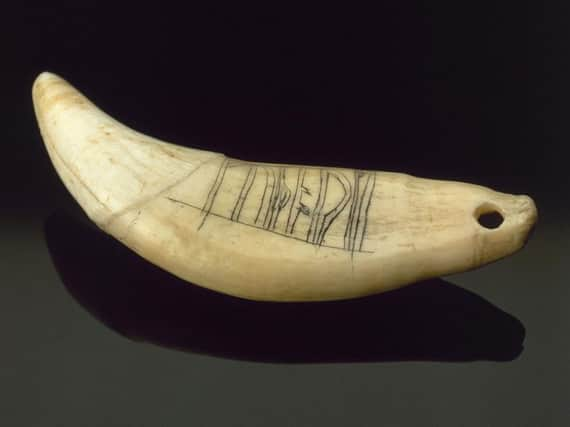The "magic" bear tooth necklace worn by a Viking in Orkney


The amulet was found at the Brough of Birsay, a former Pictish power centre that was colonised during the Viking-era, during the 1930s.
The object, which was found in one of the early Norse middens, or rubbish tips, has fascinated ever since, not least because of the Runic inscription which suggests it may have been used in the practice of magic.
Advertisement
Hide AdAdvertisement
Hide AdDr Adrián Maldonado, of the Glenmorangie Research Project at National Museum of Scotland, earlier wrote of the mysteries of the amulet.
He said it was used centuries after the last "bear roamed the sparsely forested landscapes of Orkney" with the pendant "almost certainly" brought from a foreign land".
Dr Maldonado wrote: ""By the Viking Age, bear tooth pendants like this one were rare everywhere except in Finland, Estonia and Latvia, where bear hunting was a core part of the economy."
He said such items were generally found in female or child graves, and were thought to be amulets for fertility or protection.
However, he added: "This is the only one of its kind from Scotland, and the only inscribed example, so it is unlikely to have been used in the same way as other examples."
According to Ben Waggoner in his book Heather Garb and Gear, Vikings sometimes wore bronze replicas of bear teeth in rows tied around the waist.
Michael Lerche Nielsen, University of Copenhagen said there had been much speculation as to how the inscription on the amulet should be interpreted.
"Does the fuþork (the collective name for the runic characters) imply a magic function or do the runes merely demonstrate an attempt to “try out a knife or to demonstrate literacy?".
Advertisement
Hide AdAdvertisement
Hide AdWhatever the answer, the amulet is a fascinating object of a fascinating time and place.
The walls of the Neolithic burial chamber at Maeshowe are covered with one of the largest and most famous collections of runic "graffiti" in Europe.
Around 30 inscriptions can be found in total.
It is said that the inscriptions were left when a group of Viking warriors, led by Earl Harald, sought shelter from a heavy snowstorm around Christmas 1153.
The group were making their way from Stromness to the parish of Firth a the time, with two men suffering badly on the journey.
Orkney history website orkneyjar.com includes translations of some of the inscriptions.
They include "Ingigerth is the most beautiful of all women" which is carved beside a rough drawing of a slavering dog.
Another is "Thorni f*cked. Helgi carved".
Some claim the inscriptions are a rough form of Norse verse.